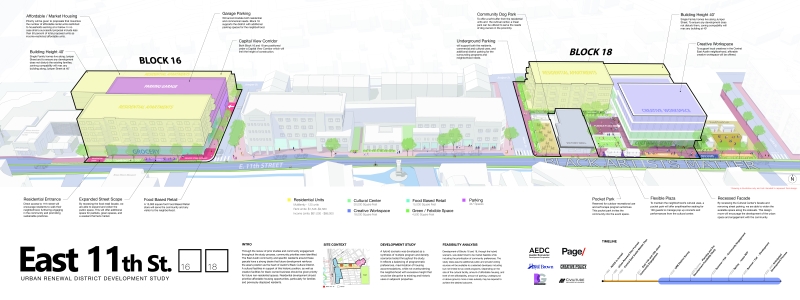
How are public and private entities teaming up to provide innovative solutions for community needs? The answer: Public-Private Partnerships (P3). With P3 projects, the private sector is responsible for providing the resources for development, design, construction, and financing, while the government manages the regulatory control and holds the project accountable to public interest.
As this contractual agreement exists between the government and private companies to deliver public infrastructure and services, where does Page come in?
The P3 format is commonly used on complex, long-term public works where the process of designing, building, and operating facilities is multifaceted, requiring careful planning and coordination. Page supports the stakeholders through our master planning services, for example, providing a comprehensive approach to project development that considers all factors that impact the project.
Our talented master planning teams analyze the site, develop a conceptual design, and create a detailed plan outlining the project's scope to meet the developer’s schedule and budget. This plan serves as a roadmap, guiding decision-making throughout the design, construction, and operation phases.
Collaborating with developer partners and advisors, Page has played a significant role in planning and designing varied P3 project types – including academic, mixed-use office, science and technology, retail, and residential facilities. Our clients benefit from our ability to provide the interdisciplinary coordination, innovative thinking, and responsiveness demanded of today’s complex projects.
A P3 Project Fostering Urban Redevelopment
What’s possible for a P3 project at the heart of Austin’s Six Square Cultural District? Austin Economic Development Corporation (AEDC) and Austin Urban Renewable Agency are collaborating to create a lively, community-focused center on two largely vacant parcels of East 11th Street, blocks 16 and 18.
AEDC and Austin Urban Renewable Agency are working hand in hand, acting as a united public entity, and building on nearly 30 years of planning efforts to move the long-awaited development forward. Page’s Planning and Urban Design team, in collaboration with Hayat Brown, became integral to the pre-development process, studying the site to offer an enhanced understanding for the future P3 developer – the private partner.
Kicking off the process, Page and AEDC connected with residents and local businesses to identify their needs and priorities. And after weeks of knocking on doors, offering open houses, conducting surveys, and attending public forums, the team found an overwhelming urgency for affordable housing, a small grocery store, and economically feasible rental office spaces for small businesses or nonprofits.
Following the comprehensive analysis of the community’s desired use of the blocks, Page proposed a conceptual design that includes building densities that align with adjacent construction, current zoning restrictions, and environmental development constraints.
Our team also attentively considered the history of East 11th Street to provide programming recommendations that carefully place blocks 16 and 18 in the context of the site, shaping a holistic district. This mixed-use, vibrant gateway between East Austin and Downtown will be infused with the identity of the historic African American Cultural District with a contemporary and radiant center that pays homage to the legacy of an informal music center on the current site.
The developer chosen by AEDC and the Austin Renewable Agency will use Page’s recommendation as an initial concept. This early identification of space constraints and potential challenges will support the developer in making informed decisions, refining the design, and effectively optimizing space, as well as helping determine the project’s cost. The P3 developer will also finance, operate, and maintain the infrastructure.
Page carefully considers the individuals and groups who will use the facilities, prioritizing community needs so the public and private entities have a successful outcome to the P3 development. Think of all the great possibilities for neighborhood centers and other public infrastructure as this innovative project delivery method becomes progressively more popular.